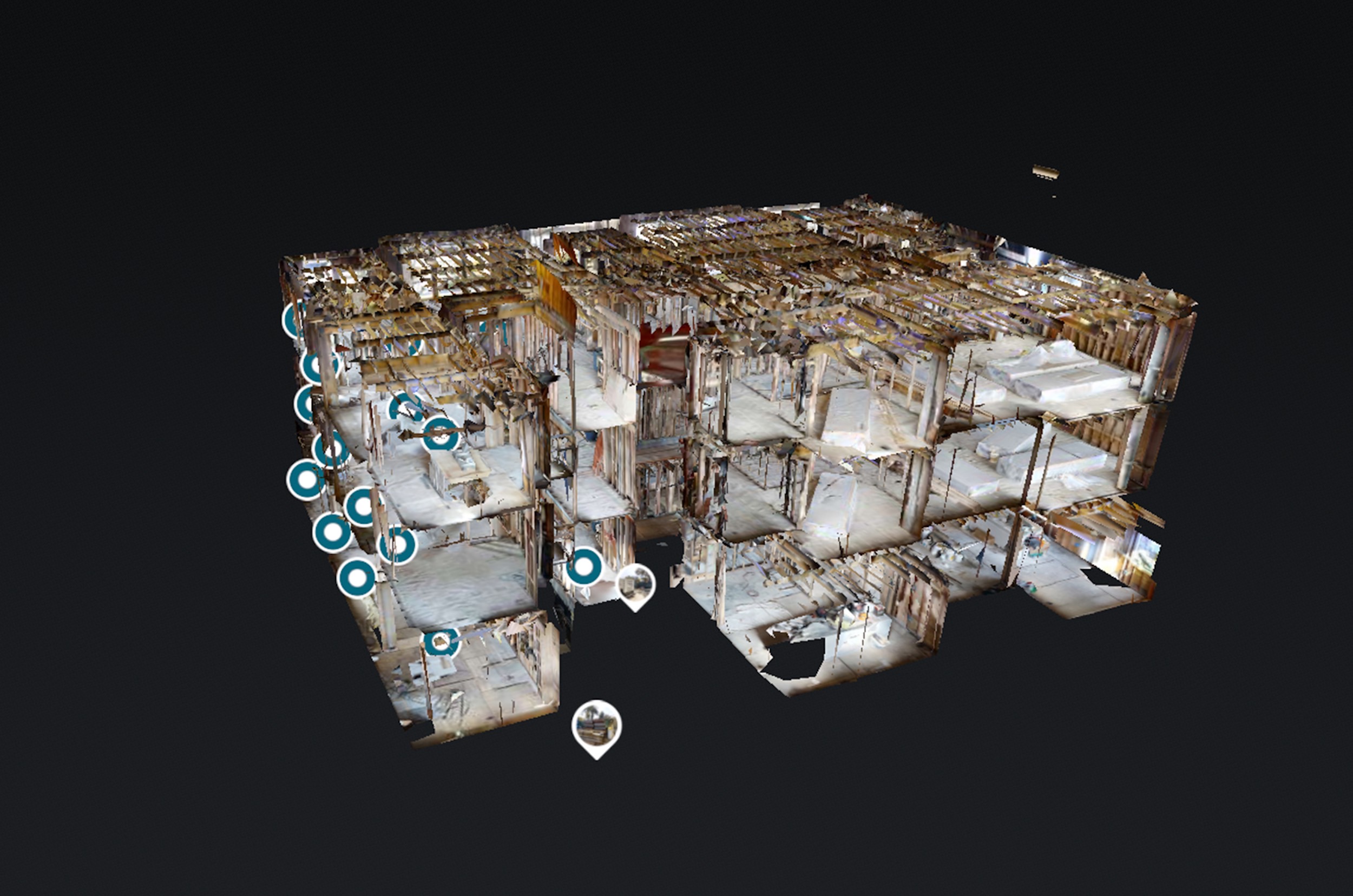Commercial real estate (CRE) marketing demands a strategic approach that goes beyond traditional methods. In a market where speed and efficiency are paramount, showcasing properties effectively is crucial. 360° virtual tours offer a powerful solution, providing potential tenants and buyers with an immersive experience that surpasses the limitations of static photos and video walk-throughs.
This blog post explores the unique advantages of using 360° virtual tours in CRE marketing, highlighting innovative applications, addressing specific challenges, and providing actionable strategies for maximizing ROI.
We’ll delve into advanced techniques, such as integrating virtual tours with other marketing materials and leveraging data analytics for targeted campaigns.
Why 360° Virtual Tours are Essential for CRE
In the commercial real estate market, time is money. 360° virtual tours offer significant advantages:
- Efficient Property Showcasing: Virtual tours allow potential tenants and buyers to thoroughly explore a property at their convenience, saving time and resources for both parties. This is particularly crucial when dealing with multiple stakeholders and geographically dispersed decision-makers.
- Enhanced Due Diligence: Detailed virtual tours facilitate in-depth due diligence, allowing potential buyers or tenants to assess the property’s suitability without the need for multiple on-site visits. This reduces delays and streamlines the decision-making process.
- Targeted Marketing Campaigns: Virtual tours can be seamlessly integrated into targeted marketing campaigns, allowing you to showcase specific property features relevant to particular tenant profiles. This precision marketing approach enhances efficiency and improves lead quality.
- Improved Tenant Retention: For existing property owners, virtual tours can be used to showcase property upgrades or renovations, improving tenant satisfaction and potentially leading to longer lease terms.
- Global Reach: Virtual tours transcend geographical boundaries, allowing you to market properties to a worldwide audience of potential investors and tenants. This is particularly beneficial for properties in less accessible locations.
- Data-Driven Decision Making: Many virtual tour platforms offer robust analytics, tracking user engagement metrics such as dwell time, areas of interest, and overall viewing duration. This data provides valuable insights into what resonates most with potential clients, enabling data-driven optimization of marketing strategies. Analyzing heatmaps can reveal areas that need improved presentation or highlight particularly attractive features.
Advanced Applications and Strategies
Beyond basic property showcasing, virtual tours can be leveraged strategically:
- Integration with CRM Systems: Integrate virtual tours directly into your CRM system, streamlining communication and providing easy access to property information for your clients.
- Interactive Floor Plans and Measurements: Incorporate detailed floor plans with clickable hotspots, allowing potential tenants to easily access precise measurements and identify key features.
- Virtual Staging for Vacant Spaces: Use virtual staging to showcase the potential of vacant spaces, helping potential tenants visualize how their business could operate within the property.
- 3D Modeling for Complex Properties: For large or complex properties, 3D modeling combined with virtual tours provides a comprehensive and immersive experience.
- Virtual Reality (VR) Integration: For high-value properties, consider using VR headsets to provide an even more immersive experience, significantly enhancing the impact of your marketing efforts. This creates a memorable and engaging experience, setting your property apart from the competition.
- High-Resolution Photography and Videography: Invest in professional-quality photography and videography to ensure your virtual tours are visually stunning and accurately reflect the property’s condition and features.
- Accessibility Features: Ensure your virtual tours are accessible to all users, including those with disabilities. This demonstrates inclusivity and expands your potential client base.
Addressing Challenges and Maximizing ROI
- Cost of Production: While professional virtual tour creation involves costs, the long-term ROI often surpasses the initial investment. Consider it a strategic marketing expense rather than a cost.
- Technical Expertise: While you can use user-friendly platforms, partnering with a professional virtual tour provider ensures high-quality results and optimal presentation.
- Regular Updates: Keep your virtual tours up-to-date to reflect any changes or improvements to the property. Outdated tours can negatively impact your marketing efforts.
Conclusion
In the competitive CRE market, 360° virtual tours are no longer a luxury—they are a necessity. By leveraging the power of immersive technology, you can streamline your marketing efforts, enhance due diligence, and reach a wider audience of potential clients.
By strategically integrating virtual tours into your overall marketing strategy and utilizing data analytics to optimize campaigns, you can significantly improve your ROI and gain a competitive edge.
The investment in high-quality virtual tours is a strategic decision that will enhance your brand image, attract high-quality leads, and ultimately drive success in the commercial real estate market. Embrace innovation, leverage technology, and elevate your CRE marketing strategy with the immersive power of 360° virtual tours.







